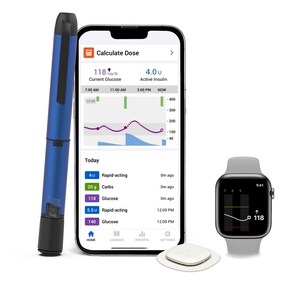DUBLIN, Oct. 6, 2020 /PRNewswire/ -- Medtronic plc (NYSE:MDT), the global leader in medical technology, today announced the first patient was implanted in its ELITE study of the InterStim™ Micro system — the only study of a rechargeable sacral neurostimulation (SNS) system to include all SNS indications for symptoms of overactive bladder, including urinary urge incontinence (UUI) and urinary frequency (UF), as well as non-obstructive urinary retention (NOUR) and fecal incontinence (FI). Keith Xavier, M.D., FPMRS, a founding partner of Urology Partners of North Texas (UPNT) implanted the patient, who suffers from overactive bladder.
"Millions of adults in the U.S. suffer from bladder and bowel disorders," said Dr. Xavier. "Through the ELITE study, our goal is to further validate existing data that sacral neurostimulation is a safe, long-term solution for patients who are limited professionally, personally and socially1 by their condition."
ELITE is the first rechargeable SNS study to include fecal incontinence, which is significant because nearly 20 million adults have fecal incontinence,2,3 and approximately 11.5 million adults suffer from both OAB and FI.3,4 Separately, more than 37 million adults in the United States suffer from overactive bladder (OAB).5,6 For patients suffering from fecal incontinence, there are few treatment options. Sacral neuromodulation is one of the only effective treatment options for patients suffering from FI, or from both OAB and FI.7
"We designed ELITE to include all four indications, and it's also the first study of a rechargeable device to include fecal incontinence. This reinforces our 25-year leadership in the SNS market," said Brooke Story, vice president and general manager of the Pelvic Health & Gastric Therapies business, which is part of the Restorative Therapies Group at Medtronic. "ELITE will provide additional evidence to our existing irrefutable clinical data that InterStim Micro offers patients freedom from conditions that take over their lives, especially for the millions who suffer from fecal incontinence, or from both OAB and FI, and have no other treatment options available to them."
The Evaluation of InterStim Micro System Performance and Safety (ELITE) study will enroll 160 subjects across 40 sites in the United States (and territories), Europe, Australia and Canada. Endpoints include patient reported outcomes, disease specific quality of life questionnaires, and symptom diaries. Patients will be followed for two years.
The InterStim Micro is 50% smaller than the market's other rechargeable SNS device, making it the world's smallest. It allows patients to choose how and when they want to charge their device — from a quick charge once a week, or as infrequent as once per month, depending on the patient's preference or device settings. InterStim Micro can recharge from zero to 100% in less than an hour*, making it the fastest battery available, and reduces the need for battery replacement surgeries due to its life of 15 years. It features SureScan™ MRI technology, which does not require impedance checks prior to an MRI scan, providing more efficiency in patient care versus the other SNS system on the market. The InterStim systems have been implanted in more than 325,000 patients and represent the only SNS technology backed by 5-year clinical data.
About Medtronic
Medtronic plc (www.medtronic.com), headquartered in Dublin, Ireland, is among the world's largest medical technology, services and solutions companies – alleviating pain, restoring health and extending life for millions of people around the world. Medtronic employs more than 90,000 people worldwide, serving physicians, hospitals and patients in more than 150 countries. The company is focused on collaborating with stakeholders around the world to take healthcare Further, Together.
Any forward-looking statements are subject to risks and uncertainties such as those described in Medtronic's periodic reports on file with the Securities and Exchange Commission. Actual results may differ materially from anticipated results.
* Based on appropriate recharger placement.
1 Leede Research, "Views on OAB: A Study for the National Association of Continence." December 16, 2015.
2 Whitehead WE, Borrud L, Goode PS, et al. Pelvic floor disorders network. Fecal incontinence in US adults: epidemiology and risk factors. Gastroenterology. 2009;137: 512-517.
3 United States Quick Facts. United States Census Bureau Web site. Available at: https://www.census.gov/quickfacts/table/ PST045215/00. Accessed July 19, 2016.
4 Coyne KS, et al. The prevalence of chronic constipation and fecal incontinence among men and women with symptoms of overactive bladder. BJU Int. 2011 Jan;107(2):254-61.
5 Stewart WF, et al. Prevalence and burden of overactive bladder in the United States. World J Urol. 2003 May;20(6):327-336.
6 United Nations, Department of Economic and Social Affairs, Population Division (2011). World Population Prospects: The 2010 Revision, CD-ROM Edition.
7 Faucheron JL, Chodez M, Boillot B. Neuromodulation for fecal and urinary incontinence: functional results in 57 consecutive patients from a single institution. Dis Colon Rectum. 2012 Dec;55(12):1278-83.
Contacts: |
|
Katie Genereux |
Ryan Weispfenning |
Public Relations |
Investor Relations |
+1-763-514-0162 |
+1-763-505-4626 |
SOURCE Medtronic plc

Related Links
WANT YOUR COMPANY'S NEWS FEATURED ON PRNEWSWIRE.COM?
Newsrooms &
Influencers
Digital Media
Outlets
Journalists
Opted In





Share this article